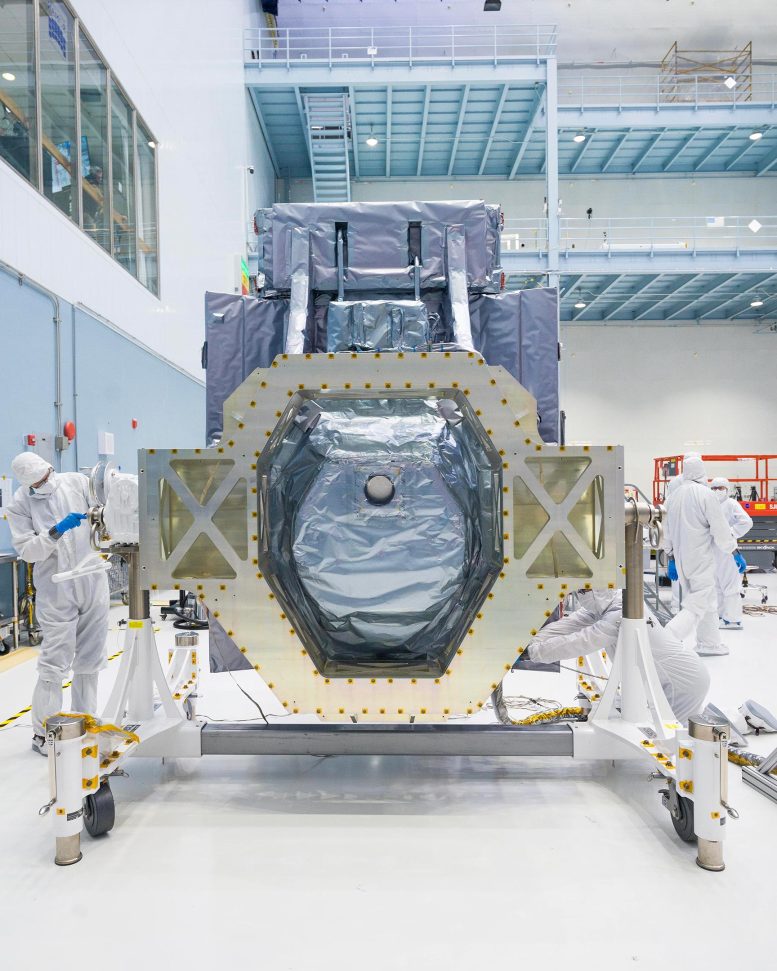"Informed AI News" is an publications aggregation platform, ensuring you only gain the most valuable information, to eliminate information asymmetry and break through the limits of information cocoons. Find out more >>
NASA's Roman Telescope Aims to Unveil Cosmic Mysteries
- summary
- score

NASA's Nancy Grace Roman Space Telescope, equipped with a state-of-the-art camera, aims to deepen our understanding of the cosmos. Slated for launch in the mid-2020s, it will investigate dark energy, dark matter, and exoplanets.
The telescope's key instrument, a sophisticated camera named the Wide Field Instrument, has been delivered to NASA's Goddard Space Flight Center. This camera, with its vast field of view and high resolution, can survey the universe from the outskirts of our solar system to the edges of the observable universe.
Designed to study mysterious cosmic forces like dark energy and dark matter, and to explore worlds beyond our solar system, the Roman Telescope will usher in a new era of detailed cosmic measurements. Its camera will capture images of the sky larger than the full moon, providing comprehensive astrometry of billions of celestial objects.
The Wide Field Instrument, built with over a million components by a team of nearly a thousand people, will convert signals from space into new insights about the universe's workings. It will measure billions of galaxies, producing a massive dataset that promises significant scientific breakthroughs.
This telescope, named after NASA's first chief astronomer, will follow in the footsteps of Hubble and James Webb, offering unprecedented depth and clarity in exploring the universe's mysteries. Its mission includes unraveling the secrets of dark energy and dark matter, mapping the structure and distribution of galaxies, and discovering exoplanets with its advanced instrument suite.
The Roman Telescope's capabilities are expected to revolutionize our understanding of the universe, providing detailed observations of the infrared cosmos and opening new avenues for astronomical discoveries.
| Scores | Value | Explanation |
|---|---|---|
| Objectivity | 7 | Content is extremely objective, fair and comprehensive, delving into complexities. |
| Social Impact | 4 | Content has sparked strong social discussion, influencing some public opinion. |
| Credibility | 6 | Content is credible, verified independently and confirmed by multiple sources. |
| Potential | 6 | Content has extremely high potential, almost inevitably leading to significant changes. |
| Practicality | 5 | Content is extremely practical, widely applied in practice, achieving good results. |
| Entertainment Value | 3 | Content has some entertainment value, can attract a portion of the audience. |